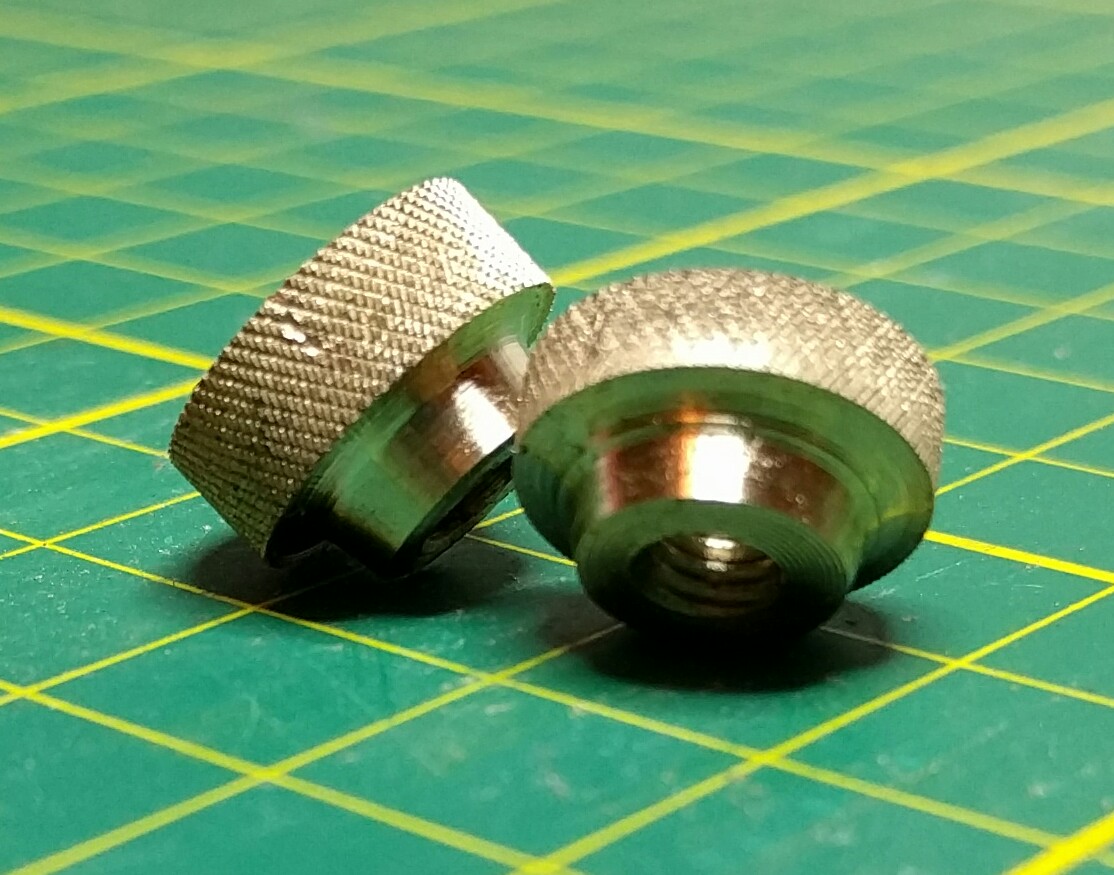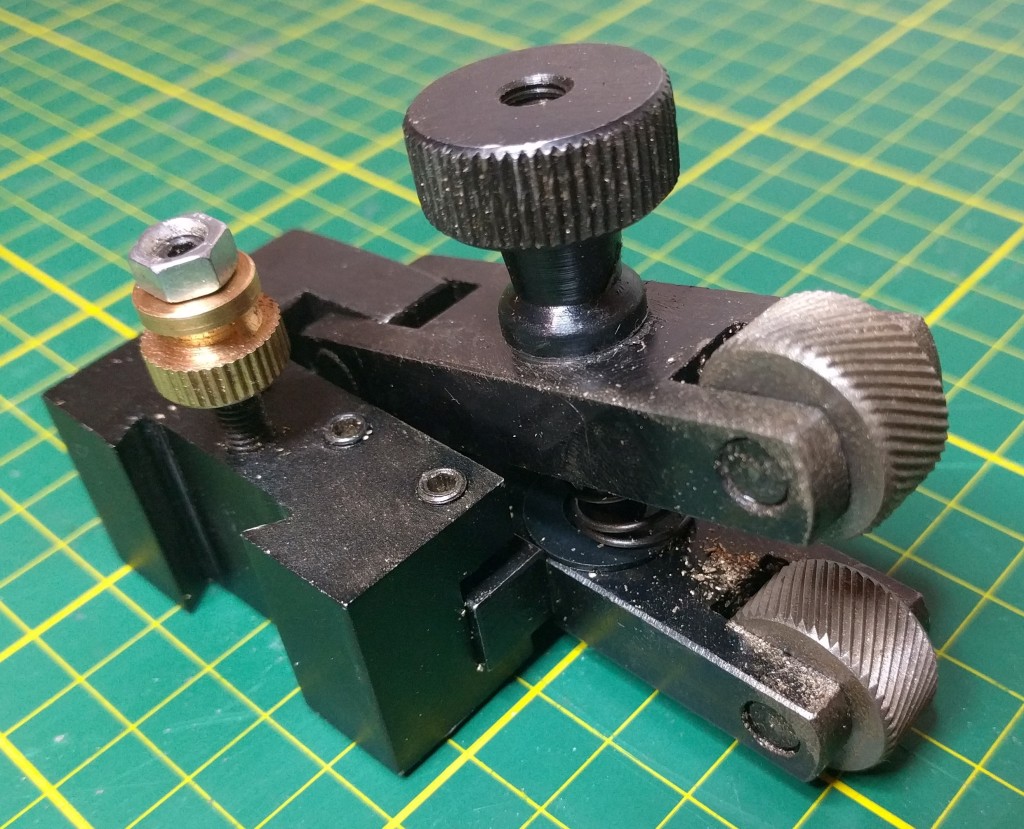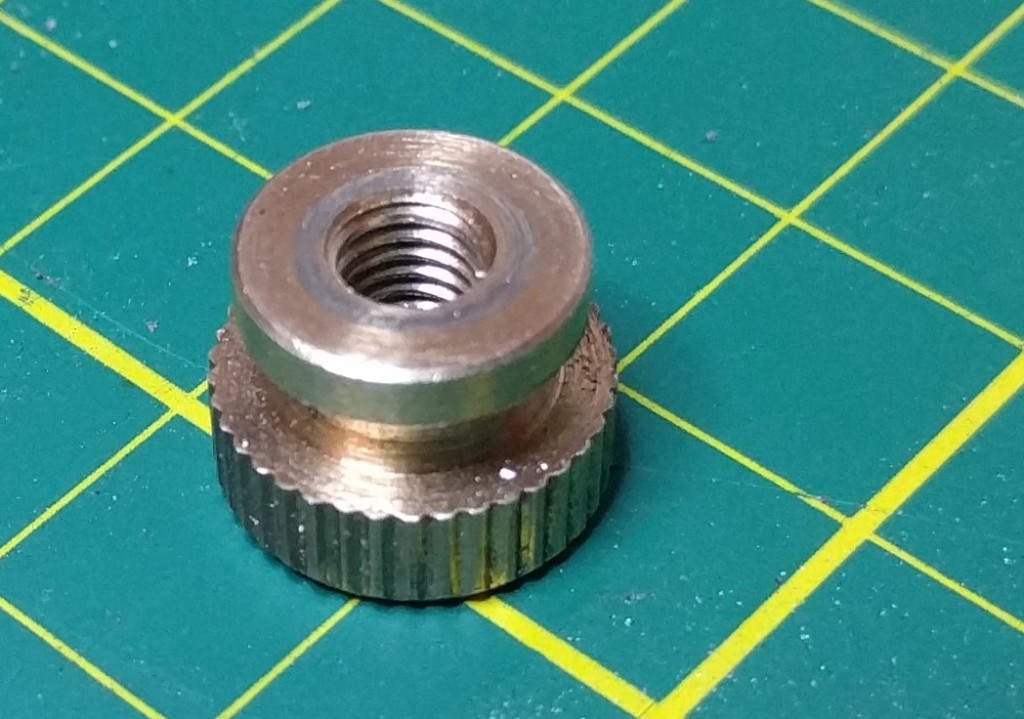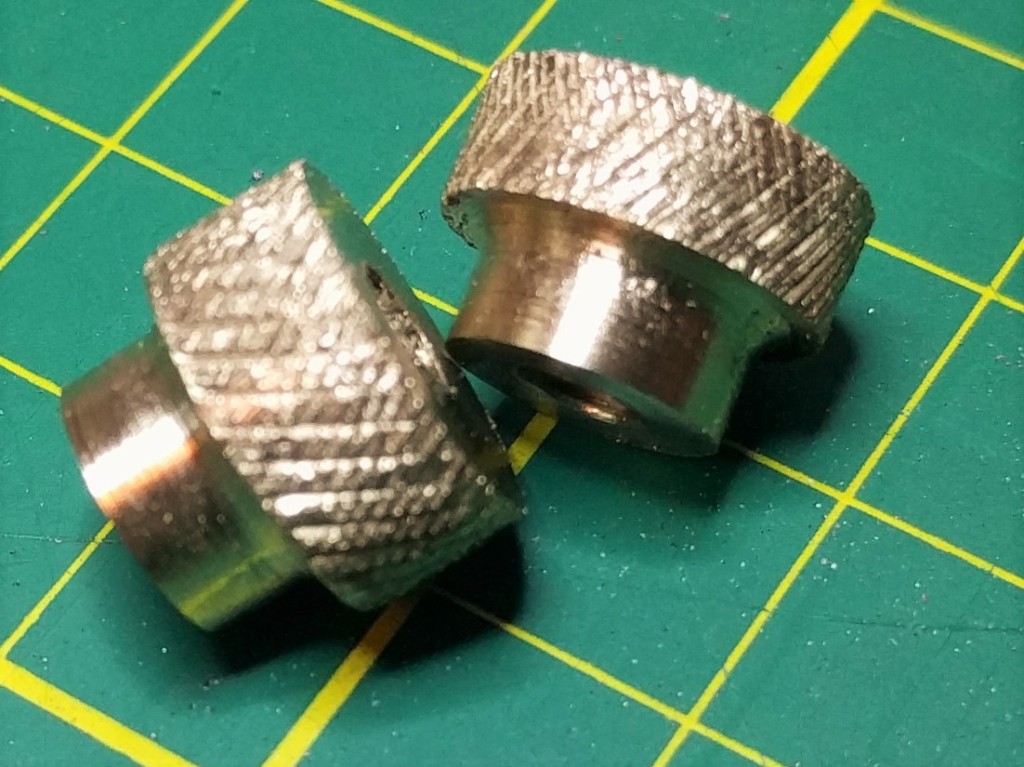A quick update on the knurling.
A little musing and I realised that the wheels on the knurling tool were 3/4″ diameter and had 48 knurl features around their circumference. This means that if they were an inch in diameter, they would leave 64 features. This is a nice round number in imperial-world.
So I needed to ensure my diameters were in 64ths of an inch for the pattern to repeat properly.
I also did a bit of reading up and discovered – much to my amazement – that you can/should feed the knurling tool across your work. Which seemed a bit counter intuitive to me.
So I gave it a go, turned my nice 14mm metric brass rod down to ‘arf hinch, set the centre of the knurling tool on the right height, clamped it reasonably tightly and started at a very slow speed.
Once the knurl had picked up, I was able to tighten the clamp nut a bit more and noted the roughened surface. I kicked in the feed and it very slowly traversed.
After it had done a bit, I gave it a squirt of cutting oil, just to see if there was a difference.
So, looking at the picture above, the knurl is pretty (there are a couple of flaws where I held the nuts in pliers to tap the holes), but I’m quite happy with that.
So, I now have four knurled nuts, two nice, two satisfactory (grumble) and can move on to making a batch of four tool holders.




